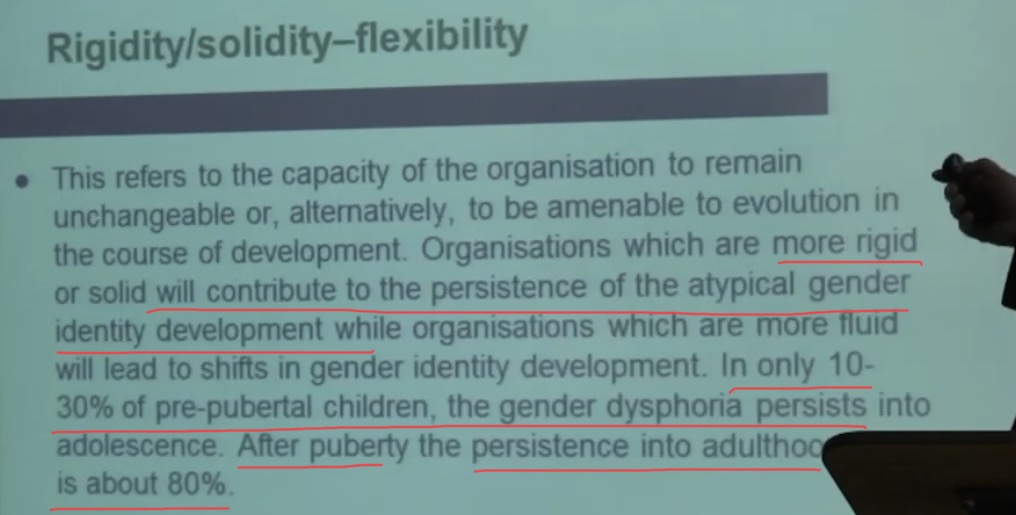I am reading this at in chunks so I do the review justice. This one will cover chapters 7 & 8. You can read the rest of the series at the link below. Do buy the book. My review is no substitute and it is an important historical record. Also order it at your Library.
Chapter 7 is aptly titles The Bombshell as there are growing numbers of staff expressing concerns, a huge surge in referrals and staff are failing to meet targets over waiting times.

The decision was taken to invite an external consultant to review G.I.Ds and, for a brief point, it looked as though significant change was on the horizon. For some staff this change couldn’t come soon enough as one commented.

The consultant, Dr Femi Nzegwu, made her recommendations which included reviewing the criteria for referrals, a minimum standard for report writing and even a temporary cessation of the service.

Anna Hutchinson shared her recollections of this time.

According to Hutchinson it was Polly Carmichael who ended the discussion about closure, in her view all it required was “brave leadership”.
There is no evidence that NHS England were ever told of the report, certainly the chief executive of the NHS Trust, where GIDs was based, not: He had to find out from the media.

Meanwhile, in 2016/17, when the report was commissioned, referrals were still increasing and the staff doubles from 40 to 80 and still they could not keep up. The criteria was not tightened up and there were multiple agencies able to refer children.

At around this time the first reported outcomes of the Tavistock experiment with puberty blockers started to emerge. The preliminary findings showed a mismatch between positive reports by the patients which were not borne out by the psychological testing. Amazingly there was no improvement of the Gender Dysphoria or the self-harm. Subjects also had higher degrees of suicide ideation.

Despite this no halt was called to the live experiment which included 162 children by 2016. Carmichael actually argued that this progression rate might mean that some children who would have benefited may have missed out! Though she did conceded it was possible that the puberty blockers influenced the trajectory for these kids. Almost as if going through a natural puberty helped resolve bodily rejection.

There was more. The researchers revealed that near a 100% of the children had progressed to cross-sex hormones. Only one stoped treatment citing issues with bone density development. For some clinicians this was a wake up call.

Hutchinson sounds absolutely horrified by what the clinic was doing to some of the more vulnerable children in our society. A horror I share.

For natal boys there is another consequence. One of the arguments for blocking puberty had been the prevention of the development of secondary sexual characteristics would avoid unnecessary surgery in the future. For males, however, the stunting of their male genitalia actually increased the likelihood they would have to undergo an even riskier type of surgery. The Tavistock staff knew that one of the boys in the Dutch study had died following complications of this type of surgery. We know also, from Marci Bowers, a “trans-identified” man and a surgeon, that these children will likely grow up and be not only sterile but inorgasmic. It shocks me everyday that we are still doing this.

Some of the clinicians describe how there practice changed after this research but the clinic itself issued no directive and did not change practice. One of the clinicians drafted a leaflet, to be shared with patients and their families, warning about the issue with future genital surgery. The leaflet needed approval from Carmichael who did not respond to the requests; a decision described as unethical by one 👇 clinician.

The reluctance to commit this to paper invites speculation as to Carmichael’s motives. This was one suggestion.

Chapter Eight.
This chapter covers the fallout for the staff and how some began to modify their practice in line with the new information. Stress levels were high and staff were offloading to one another but the service itself had not reviewed its treatment protocols. Discussions across GIDs, were they occurred were described as polarising.

This chapter also covers what seems to be the dysfunctional relationship with CAMHS (Childhood and Adolescent Mental Health Services). It appeared that the impact of economic policy “austerity” had placed intolerable pressure on CAMHS who were referring to GIDs partly to relieve pressure on their service. It was not that these children did not express unhappiness with their sexed body they did, but they often had co-morbid mental health issues which were left untreated by a referral to GIDs.
A further difficulty was that it was ideologically driven lobby groups, like Mermaids, who stepped in to provide support to parents and children. Mermaids , as we know, believed in the idea someone could be born in the wrong body and pushed the idea that if you did not medicalise these kids they would commit suicide. There involvement would, inevitably, drive up referrals and make existing referrals anxious for the medical pathway.
Matters were not helped by the number of agencies able to refer children to GIDs.

The feeling I am left with is a service spinning out of control and a leadership team unable to take the hard decisions and, at the heart of this problem, children bing irreversibly damaged.
You can support my work by taking out a paid subscription to my substack or donating below. All donations gratefully received and they do help me cover my costs and also to keep content open for those not able to contribute. (I will add other methods as soon as I have figured it out. 😉)

Researching the history and the present of the “transgender” movement and the harm it is wreaking on our society.
£10.00












































































































































